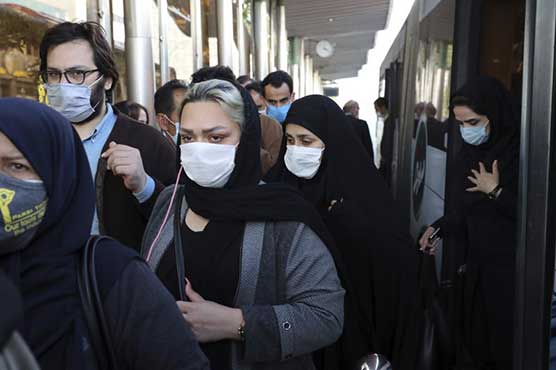Iran has highest daily virus death toll, new patient count

Iran appeared to curb the spread of the virus somewhat in May with movement restrictions
TEHRAN (AP) — For the second day in a row, Iran shattered its single-day record for new deaths and infections from the coronavirus, with 272 people confirmed dead among more than 4,200 new cases on Monday.
Like in many other countries, the spiraling outbreak in Iran reflects the government’s contradictory virus response. This month, as the daily recorded death toll reached the triple digits, authorities announced tighter restrictions for the hard-hit capital of Tehran. Recently reopened universities and schools, as well as libraries, mosques, cinemas, museums and beauty salons shuttered. On Saturday, the government mandated that all Tehran residents wear face masks outdoors and in public places, warning violators would be fined. Cabinet spokesman Ali Rabiei promised those who tested positive would be closely tracked.
And yet enforcement in the country of 80 million remains a challenge. Those who disobey face fines of just 500,000 riyals, or $1.60, roughly the price of a burger downtown. Many residents, tired of staying home, now ignore the rules about masks and social distancing to pack the city’s indoor cafes and restaurants. As residents defy coronavirus precautions and the government resists a lockdown amid a worsening economic crisis, Iran’s caseload is skyrocketing.
Early in the pandemic, Iran emerged as a global epicenter of the virus and saw the worst outbreak in the Middle East, with more than 500,000 confirmed cases.
It has recorded over 28,800 deaths and 409,000 recoveries. Initially, leaders played down the virus’s risks and, as hospitals filled up, the reported figures fueled skepticism among international experts who suspected Iran was hiding the true number of infections and deaths. Authorities have since admitted that outbreak is significantly bigger than reported, with a recent parliamentary report putting the number of infections at “eight to 10 times” higher than the official numbers.
Iran appeared to curb the spread of the virus somewhat in May with movement restrictions, only to see it return as the country reopened to boost economic activity the next month. Early in the outbreak, religious considerations also played a role in the Shiite theocracy as authorities declined for weeks to close shrines where the faithful touch or kiss the tombs’ protective bars.
Over recent weeks, Iran has seen daily death tolls spike to their highest-ever levels. The country has struggled to balance provincial lockdowns to stop the virus’s spread with the fear of stalling out an economy already suffering under U.S. sanctions after America’s unilateral withdrawal in 2018 from Tehran’s nuclear deal with world powers.
As in the White House, where President Donald Trump and a growing circle of his aides and staff recently tested positive for the coronavirus, the disease has spread to the highest levels of Iran’s government. Among those recently infected is the head of the country’s atomic energy organization and the country’s vice president in charge of budget and planning. A number of Cabinet ministers also have tested positive, as well as top officials including senior Vice President Eshaq Jahangiri and Vice President Massoumeh Ebtekar. The head of an Iranian government task force on the coronavirus who had urged the public not to overreact about its spread was among the first officials to contract the virus in late February.
The virus first appeared in Iran at the same time the government was trying to shore up support for the country’s parliamentary elections, which saw the lowest voter turnout since the 1979 Islamic Revolution that brought its clerical leadership to power.
As the death toll reached new heights, the nation’s currency plunged to its lowest level ever on Sunday, following the Trump administration’s decision on Thursday to blacklist 18 Iranian banks that had so far escaped the bulk of re-imposed U.S. sanctions.


